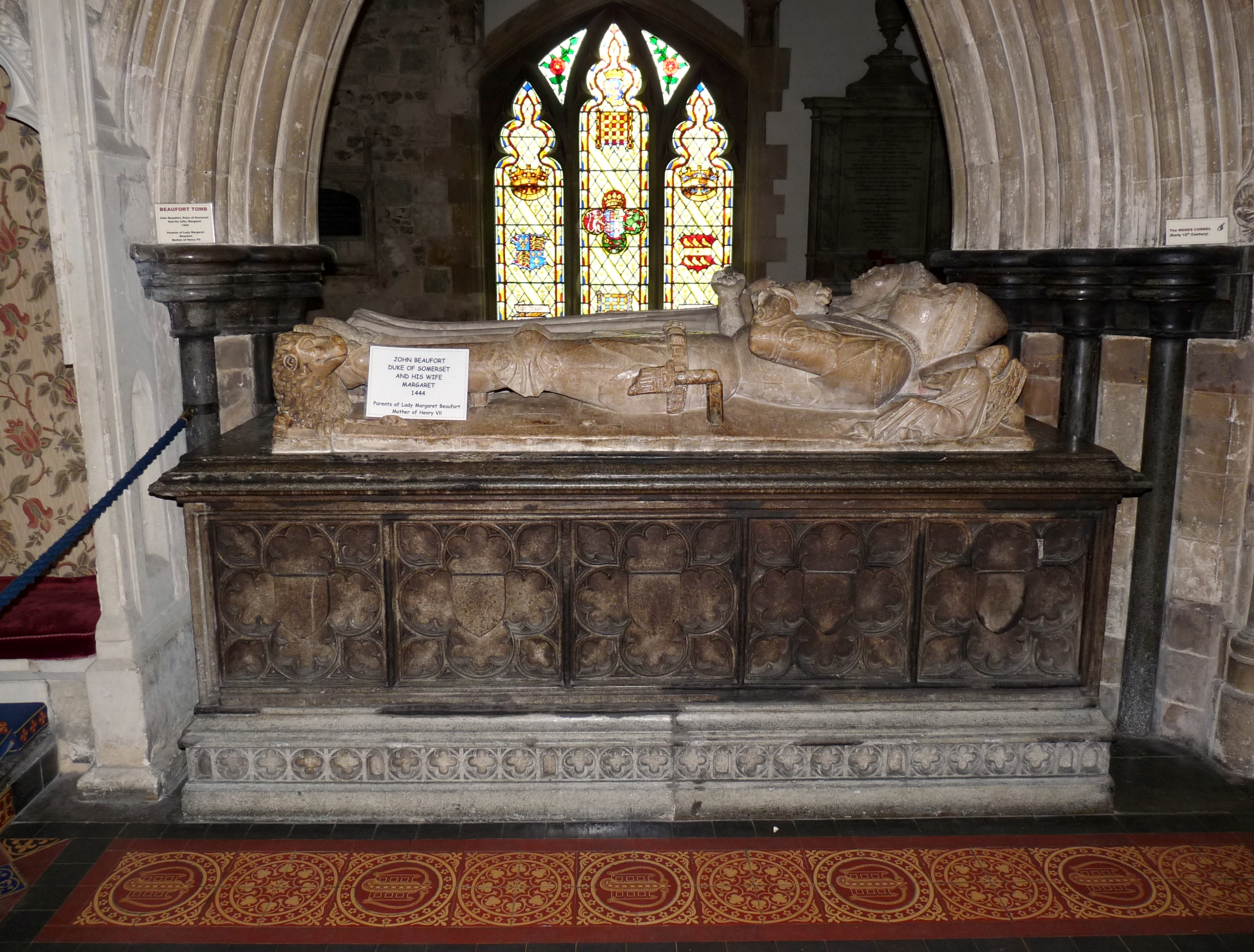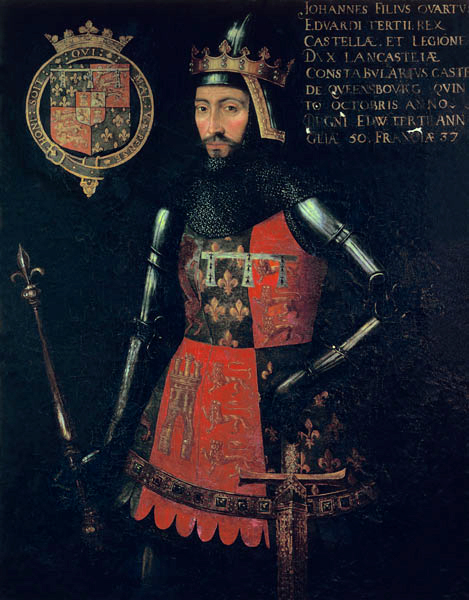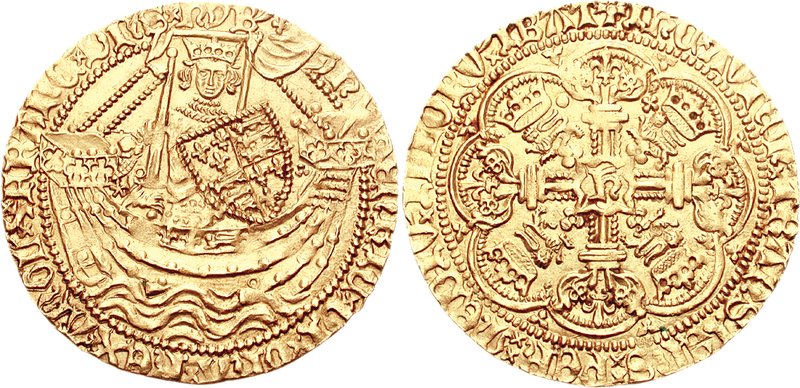|
Beaufort Family
The House of Beaufort ( ) is an English noble family which originated in the fourteenth century as the legitimated issue of John of Gaunt, 1st Duke of Lancaster, by Katherine Swynford. Gaunt and Swynford had four children: John Beaufort, 1st Earl of Somerset (1373–1410); Cardinal Henry Beaufort (1375–1447), Bishop of Winchester; Thomas Beaufort, 1st Duke of Exeter (1377–1426) and Joan Beaufort, Countess of Westmorland (1379–1440). When Gaunt finally married Swynford as his third wife in 1396, the Beauforts were legitimised by Pope Boniface IX and by royal proclamation of the reigning monarch King Richard II the following year. John of Gaunt’s eldest legitimate son by his first wife Blanche of Lancaster was Henry Bolingbroke, who would eventually take the throne from Richard II as King Henry IV in 1399, the year of Gaunt’s death. Henry would be the first of the House of Lancaster (the main line descending from John of Gaunt) to rule England, and would eventually be ... [...More Info...] [...Related Items...] OR: [Wikipedia] [Google] [Baidu] |
Armorial Of The House Of Plantagenet
The House of Plantagenet was the first truly armigerous royal dynasty of England. Their predecessor, Henry I of England, had presented items decorated with a lion heraldic emblem to his son-in-law, Plantagenet founder Geoffrey Plantagenet, Count of Anjou, Geoffrey, Count of Anjou, and his family experimented with different lion-bearing coats until these coalesced during the reign of his grandson, Richard I of England, Richard I (1189–1199), into a coat of arms with three lions on a red field, formally ''Gules, three lions passant guardant or (armed and langued azure)'', that became the Royal Arms of England, and colloquially those of England itself. The various cadet branches descended from this family bore Cadency, differenced versions of these arms, while later members of the House of Plantagenet would either Quartering (heraldry), quarter or Impalement (heraldry), impale these arms with others to reflect their political aspirations. Overview of Plantagenet arms Before Edward ... [...More Info...] [...Related Items...] OR: [Wikipedia] [Google] [Baidu] |
Pope Boniface IX
Pope Boniface IX (; ; c. 1350 – 1 October 1404, born Pietro Tomacelli) was head of the Catholic Church from 2 November 1389 to his death, in October 1404. He was the second Roman pope during the Western Schism.Richard P. McBrien, ''Lives of the Popes'', (HarperCollins, 2000), 249. In this time, the Avignon claimants, Clement VII and Benedict XIII, maintained the Roman Curia in Avignon, under the protection of the French monarchy. He is the last pope to date to take on the pontifical name "Boniface". Early life Born c. 1350 in Naples, Pietro (also Piero or Perino) Cybo Tomacelli was son of Baron Giacomo Tomacelli and Verdella Caracciolo, feudataries of Casarano and nearby Casaranello, from noble neapolitan families, and a descendant of Tamaso Cybo, who belonged to an influential noble family from Genoa and settled in Casarano in the Kingdom of Naples. He was baptized in the paleochristian church of Santa Maria della Croce (the church of Casaranello). An unsympathetic Ger ... [...More Info...] [...Related Items...] OR: [Wikipedia] [Google] [Baidu] |
Edmund Crouchback
Edmund, 1st Earl of Lancaster (16 January 12455 June 1296), also known as Edmund Crouchback, was a member of the royal Plantagenet Dynasty and the founder of the first House of Lancaster. He was Earl of Leicester (1265–1296), Lancaster (1267–1296) and Derby (1269–1296) in England and Count Palatine of Champagne (1276–1284) in France. Named after the 9th-century saint, Edmund was the second surviving son of King Henry III of England and Eleanor of Provence and the younger brother of King Edward I of England, to whom he was loyal as a diplomat and warrior. In 1254, the 9-year-old Edmund became involved in the " Sicilian business", in which his father accepted a papal offer granting the Kingdom of Sicily to Edmund, who made preparations to become king. However, Henry III could not provide funds for the operation, prompting the Papacy to withdraw the grant and give it to Edmund's uncle, Charles I of Anjou. The "Sicilian business" outraged the barons led by the Earl of Lei ... [...More Info...] [...Related Items...] OR: [Wikipedia] [Google] [Baidu] |
Champagne (province)
Champagne () was a province in the northeast of the Kingdom of France, now best known as the Champagne wine region for the sparkling white wine that bears its name in modern-day France. The County of Champagne, descended from the early medieval kingdom of Austrasia, passed to the French crown in 1314. Formerly ruled by the counts of Champagne, its western edge is about 160 km (100 miles) east of Paris. The cities of Troyes, Reims, and Épernay are the commercial centers of the area. In 1956, most of Champagne became part of the French administrative region of Champagne-Ardenne, which comprised four departments: Ardennes, Aube, Haute-Marne, and Marne. From 1 January 2016, Champagne-Ardenne merged with the adjoining regions of Alsace and Lorraine to form the new region of Grand Est. Etymology The name ''Champagne'', formerly written ''Champaigne'', comes from French meaning "open country" (suited to military maneuvers) and from Latin ''campanius'' meaning "level coun ... [...More Info...] [...Related Items...] OR: [Wikipedia] [Google] [Baidu] |
Montmorency-Beaufort
Montmorency-Beaufort () is a commune in the Aube department in north-central France. Through the English noble House of Beaufort and the later peerage of Beaufort, both named after the local castle, it is the ultimate origin of most Beaufort toponyms in the English-speaking world. Population See also * Communes of the Aube department The following is a list of the 431 communes of the Aube department of France France, officially the French Republic, is a country located primarily in Western Europe. Overseas France, Its overseas regions and territories include French Gu ... * House of Beaufort References Communes of Aube Aube communes articles needing translation from French Wikipedia {{BarAube-geo-stub ... [...More Info...] [...Related Items...] OR: [Wikipedia] [Google] [Baidu] |
Tudor Dynasty
The House of Tudor ( ) was an English and Welsh dynasty that held the throne of England from 1485 to 1603. They descended from the Tudors of Penmynydd, a Welsh noble family, and Catherine of Valois. The Tudor monarchs ruled the Kingdom of England and the Lordship of Ireland (later the Kingdom of Ireland) for 118 years with five monarchs: Henry VII, Henry VIII, Edward VI, Mary I and Elizabeth I. The Tudors succeeded the House of Plantagenet as rulers of the Kingdom of England, and were succeeded by the Scottish House of Stuart. The first Tudor monarch, Henry VII, descended through his mother from the House of Beaufort, a legitimised branch of the English royal House of Lancaster, a cadet house of the Plantagenets. The Tudor family rose to power and started the Tudor period in the wake of the Wars of the Roses (1455–1487), which left the main House of Lancaster (with which the Tudors were aligned) extinct in the male line. Henry VII (a descendant of Edward III, and the ... [...More Info...] [...Related Items...] OR: [Wikipedia] [Google] [Baidu] |
Henry VII Of England
Henry VII (28 January 1457 – 21 April 1509), also known as Henry Tudor, was King of England and Lord of Ireland from his seizure of the crown on 22 August 1485 until his death in 1509. He was the first monarch of the House of Tudor. Henry was the son of Edmund Tudor, 1st Earl of Richmond, and Lady Margaret Beaufort. His mother was a great-granddaughter of John of Gaunt, an English prince who founded the Lancastrian cadet branch of the House of Plantagenet. His father was the half-brother of the Lancastrian king Henry VI. Edmund Tudor died three months before his son was born, and Henry was raised by his uncle Jasper Tudor, a Lancastrian, and William Herbert, a supporter of the Yorkist branch of the House of Plantagenet. During Henry's early years, his uncles and the Lancastrians fought a series of civil wars against the Yorkist claimant, Edward IV. After Edward retook the throne in 1471, Henry spent 14 years in exile in Brittany. He attained the throne when his f ... [...More Info...] [...Related Items...] OR: [Wikipedia] [Google] [Baidu] |
Edmund Tudor, Earl Of Richmond
Edmund Tudor, 1st Earl of Richmond ( – 3 November 1456), also known as Edmund of Hadham, was the father of King Henry VII of England and a member of the Tudors of Penmynydd, Tudor family of Penmynydd. Born to Sir Owen Tudor and the dowager queen Catherine of Valois, Edmund was the half-brother of Henry VI of England. He was raised for several years by Katherine de la Pole, and Henry took an interest in Edmund's upbringing, granting him a title and lands once he came of age. Both Edmund and his brother, Jasper Tudor, Duke of Bedford, Jasper, were made advisers to the King, as they were his closest remaining blood relatives. The brothers were made senior earls in the royal court and had influential positions in the Parliament of England. Edmund was also granted Baynard's Castle, London, and ran a successful estate. He was married to Lady Margaret Beaufort, after her first marriage was annulled. Prior to the start of the Wars of the Roses, Edmund liaised with Richard of York, 3rd ... [...More Info...] [...Related Items...] OR: [Wikipedia] [Google] [Baidu] |
John Beaufort, 1st Duke Of Somerset
John Beaufort, 1st Duke of Somerset, 3rd Earl of Somerset (25 March 1404 – 27 May 1444) was an English nobleman and military commander during the Hundred Years' War. He was a paternal first cousin of King Henry V and the maternal grandfather of Henry VII. Origins Born on 25 March 1404, he was the second son of John Beaufort, 1st Earl of Somerset, the eldest of the four legitimised children of John of Gaunt, 1st Duke of Lancaster, by his mistress Katherine Swynford. John of Gaunt was the third surviving son of King Edward III. His mother was Margaret Holland, a daughter of Thomas Holland, 2nd Earl of Kent, the son of Joan "the Fair Maid of Kent", a granddaughter of King Edward I and wife of Edward the Black Prince (eldest brother of John of Gaunt) and mother of King Richard II. Career In 1418 he became 3rd Earl of Somerset, having succeeded his elder brother Henry Beaufort, 2nd Earl of Somerset (1401–1418), who died unmarried, aged 17, whilst fighting for the Lancast ... [...More Info...] [...Related Items...] OR: [Wikipedia] [Google] [Baidu] |
Wars Of The Roses
The Wars of the Roses, known at the time and in following centuries as the Civil Wars, were a series of armed confrontations, machinations, battles and campaigns fought over control of the English throne from 1455 to 1487. The conflict was fought between supporters of the House of Lancaster and House of York, two rival cadet branches of the royal House of Plantagenet. The conflict resulted in the end of Lancaster's male line in 1471, leaving the Tudors of Penmynydd, Tudor family to inherit their claim to the throne through the female line. Conflict was largely brought to an end upon the union of the two houses through marriage, creating the Tudor dynasty that would subsequently rule England. The Wars of the Roses were rooted in English socio-economic troubles caused by the Hundred Years' War (1337–1453) with France, as well as the quasi-military bastard feudalism resulting from the powerful duchies created by King Edward III. The mental instability of King Henry VI of Englan ... [...More Info...] [...Related Items...] OR: [Wikipedia] [Google] [Baidu] |
Henry VI Of England
Henry VI (6 December 1421 – 21 May 1471) was King of England from 1422 to 1461 and 1470 to 1471, and English claims to the French throne, disputed King of France from 1422 to 1453. The only child of Henry V of England, Henry V, he succeeded to the Throne of England, English throne at the age of eight months, upon his father's death, and to the List of French monarchs, French throne on the death of his maternal grandfather, Charles VI of France, Charles VI, shortly afterwards. Henry was born during the Hundred Years' War (1337–1453), he is the only English monarch to have been crowned King of France, following his coronation at Notre-Dame de Paris in 1431 as Henry II. His early reign, when England was ruled by a Regency government, 1422–1437, regency government, saw the pinnacle of English power in Kingdom of France, France. However, setbacks followed once he assumed full control in 1437. The young king faced military reversals in France, as well as political and financia ... [...More Info...] [...Related Items...] OR: [Wikipedia] [Google] [Baidu] |
Henry V Of England
Henry V (16 September 1386 – 31 August 1422), also called Henry of Monmouth, was King of England from 1413 until his death in 1422. Despite his relatively short reign, Henry's outstanding military successes in the Hundred Years' War against Kingdom of France, France made Kingdom of England, England one of the strongest military powers in Europe. Immortalised in Shakespeare's "Henriad" plays, Henry is known and celebrated as one of the greatest warrior-kings of medieval England. Henry of Monmouth, the eldest son of Henry IV of England, Henry IV, became heir apparent and Prince of Wales after his father seized the throne in 1399. During the reign of his father, the young Prince Henry gained military experience fighting the Welsh during the Welsh Revolt, revolt of Owain Glyndŵr, and against the powerful Percy family of Northumberland. He played a central part at the Battle of Shrewsbury despite being just sixteen years of age. As he entered adulthood, Henry played an increasing ... [...More Info...] [...Related Items...] OR: [Wikipedia] [Google] [Baidu] |







